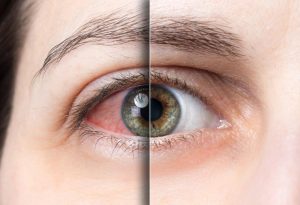It might seem that earwax exists to stick to the end of a cotton swab and subsequently gross us out, but it does have a greater purpose. Like the mucus that coats your nasal passages, or even your tears, earwax exists to keep your ears healthy by trapping unhealthy material until it can be removed.
Earwax is a normal and healthy part of being human, but it can get out of control and possibly cause damage if not properly and carefully removed. The medical team at Family Urgent Care in Chicago is led by Asrar Sheikh, MD, and Teofilo Vinluan, MD, two experienced professionals who offer ear irrigation for irritating wax buildup. Here’s what you need to know.
What’s the deal with earwax?
Earwax is primarily composed of cerumen, a waxy serum produced by glands in the ear. Cerumen traps dust, dirt, and dead skin cells, inhibiting the growth of harmful bacteria. Earwax protects the inner ear from damaging material and coats the sensitive tissue within.
You might notice that your earwax gets runny in hot weather or that you have more or less than someone to whom you’re close. Sometimes, earwax can flake and fall out of the ear or smear your earphones.
For some of us, though, earwax builds up, causing irritation and discomfort. Unusual earwax buildup isn’t usually indicative of an underlying condition, and complications from excessive earwax are generally very mild. People who have narrow ear canals, ears with long hair, scalp conditions, or swimmer’s ear are most vulnerable to experiencing an overproduction of earwax.
Perhaps the worst earwax is impacted cerumen, where earwax buildup has hardened in the ear canal, causing feelings of fullness and compromising your hearing. More severe symptoms include itching, chronic cough, dizziness, and pain.
Why do I need ear irrigation?
Ear irrigation is a safe and easy way to keep your ear canal clean and your hearing as crisp and sensitive as possible. Ear irrigation can not only clean your ear canals but can release impacted cerumen. While it can be dangerous to try to use tools to remove this plug in your ear, ear irrigation is a much easier, gentler, and safer option.
It’s not unusual for foreign objects to become lodged in your ear. Not only is this uncomfortable, but it may carry bacteria that can cause an infection and block your primary care doctor’s ability to see all of your inner ear, making them unable to give you a proper exam. Ear irrigation is a gentle and effective way to free the object and protect the health of your inner ear.
What should I expect during an ear irrigation procedure?
If you’ve been having difficulty with your hearing, we’re happy to schedule you for an appointment. At your appointment, Dr. Vinluan or Dr. Sheik will examine your ear canal to confirm that you have a buildup of earwax. If you do, your provider can help you on the spot.
After making sure that you’re sitting or laying down comfortably, your provider uses a series of special tools to safely remove the wax buildup. A gentle stream of room-temperature water or saline solution is sprayed into the ear canal, softening and loosening the buildup.
Impacted cerumen that has blocked the ear will normally leave the ear in one solid piece. It is also possible, and healthy, for your wax to be released piece by piece until your ear canal is clean. Your provider will use a set of specialized tools to capture the removed wax and dispose of it at the office.
After your procedure, you may experience some momentary dizziness or ringing in your ear. You may also experience some mild inflammation. These symptoms should subside within a few minutes but if you develop pain or irritation in the days following your procedure, contact your provider immediately.
My hearing isn’t what it was a year ago.
Before recommending any treatment, your provider sits with you for a full consultation. During the consultation, your provider rules out any conditions that may affect your ability to receive ear irrigation, including an active case of swimmer’s ear, a common bacterial ear infection.
Though excessive wax is far more annoying than dangerous, leaving it untreated could cause other problems that may affect your hearing. Don’t wait to take care of this waxy problem. Call our compassionate professionals for an appointment at any of our locations or book online with us today.
























